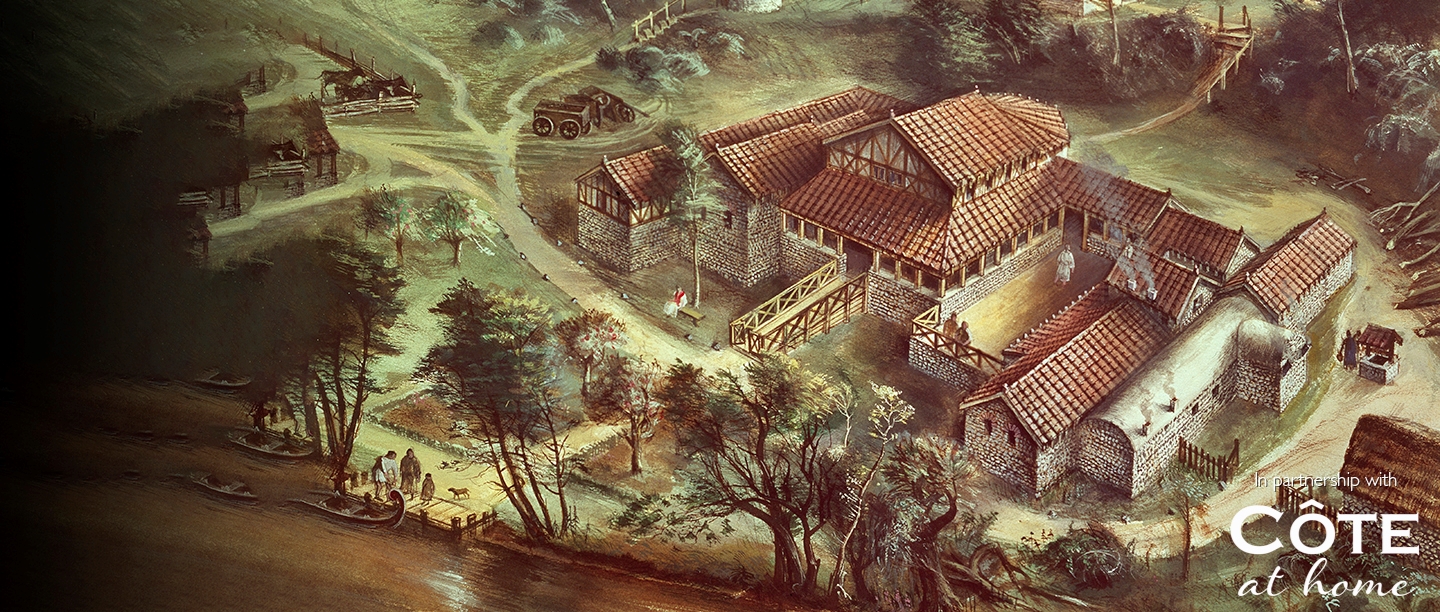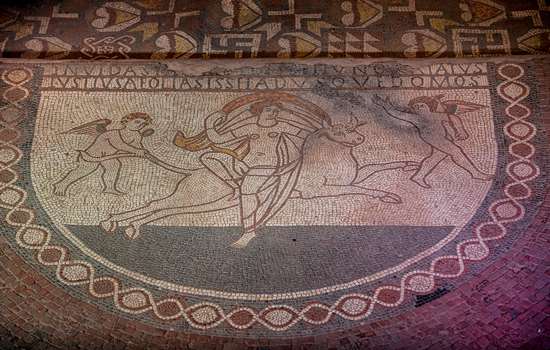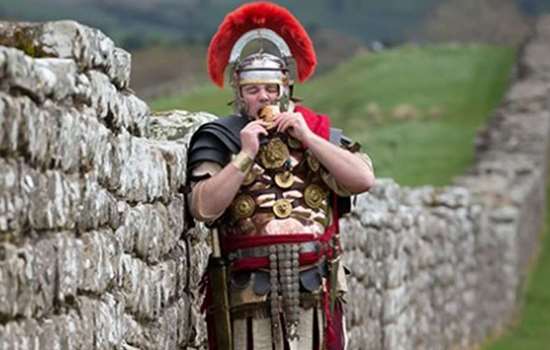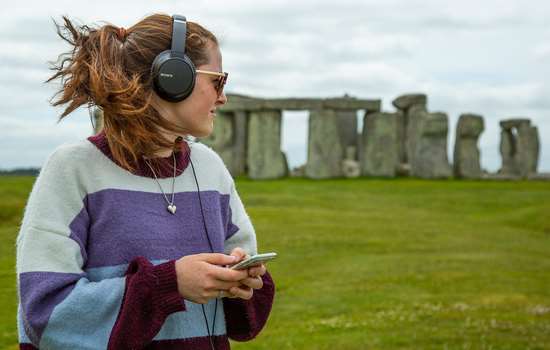Listen to our in-depth podcast episode on the feasts that took place at Lullingstone Roman Villa
The popular perception of Roman feasts is one of gluttonous excess, in large part because the Romans left many depictions of their convivia (feasts or banquets) that encouraged this impression. Examples include Pliny the Elder’s description of Cleopatra dissolving a pearl in wine then drinking it in his Natural History, or Emperor Elagabalus’s elaborate feasts serving peas mixed with grains of gold and 600 ostrich brains in the Historia Augusta. However, these descriptions not only depict the very wealthiest in society, they were often satirical, and so they may not be accurate reflections even of Imperial feasts. The misconception that Romans had designated vomitoriums, rooms in which they could be sick before returning to the table to continue eating, grew out of this exaggerated image.
An alternative source of information is surviving cookery books, such as the De re culinaria, attributed to Apicius. This book contains recipes with enough information that they can and have been adapted for use in the modern kitchen. However, as with the literary descriptions, it does not necessarily reflect the dining habits of people throughout the empire but the wealthy of Rome itself. Dishes of flamingo and parrot will not have been served at Lullingstone (pictured) any more than pearls and gold.
So, what would a feast at Lullingstone really have been like?
The Food
While the owners of Lullingstone would not have eaten all of the dishes available to the Roman elites, they were undoubtedly wealthy members of society. So we can be sure that a banquet here would be influenced by the tastes of Imperial Rome. They may even have had a male servant or slave familiar with Apicius as their cook.
As such, the meal will have had the standard three courses of the Roman banquet. The gustatio, comprising small tasters of vegetables, shellfish and eggs, was followed by the primae mensae, which could include roast meats, poultry and vegetables. These main dishes were usually heavily flavoured with herbs and liquamen (fish sauce). The final course was the secundae mensea, which could comprise desserts such as honey cakes, fruit, pastries, shellfish and snails. They would have drunk wine or beer alongside the food.
We know that a wide variety of meats were available to the occupants of Lullingstone. Archaeological investigation has found the remains of cows, sheep, pigs, hare and possibly deer, as well as geese and a woodcock. Other remains that probably came from food are periwinkle and oyster shells, grains of wheat, corn and oats, as well as fruit seeds and pips (probably from sloes, cherries and/or cherry plums).
Read our previous feasts through history article on the prehistoric feasts at Durrington Walls
The Dining Room
One of the most distinctive survivals at Lullingstone is the room containing the 4th-century mosaic depicting Bellerophon on Pegasus spearing the Chimaera and Europa being carried away by Jupiter. It was in this room that banquets would have been held. Its shape, a square chamber alongside a raised semi-circular apse, is one that emerges in the late 3rd century in aristocratic houses throughout the empire. It is a shift away from an earlier rectangular dining room design in which three couches were placed around the edge.
In this new design, a stibadium (semi-circular curved couch) is placed within the apse and all the diners recline on it with their heads towards the centre. The large rectangular space in front of them would be left unoccupied, with servants crossing it to bring out new dishes and possibly some form of entertainment taking place.
The room was highly decorated. Alongside the mosaic, the walls would have been painted. Unfortunately, no painted plaster survives for this room so we don’t know exactly what it looked like, but the corridors immediately around it had brown columns against a white background and patterns of purple, pink and orange between them. We can assume the dining room would have more elaborate decoration than this.
The bowls and dishes used to serve the food would have also added to the impression of opulence (pictured is a flagon from the museum at Lullingstone). The remains of at least 30 high-quality clear glass beakers and bowls have survived, including five decorated with figures. Tableware of copper and silver was probably also in use, since both appear in grave goods found here. They would have appeared alongside the many types of decorative ceramic vessels traded from around the country and imported from abroad that have survived.
The Guests
Although the Romans did sometimes take part in large public banquets, those held at home were small private affairs. The stibadium couch had space for about eight people and they were arranged according to status. Reclining on a couch to eat while others stood and served you was a demonstration of power and prestige within Roman culture.
Children would not have been present although women were. Both art and literature show women reclining alongside men at banquets, though they are sometimes shown seated in upright chairs to the side of the couch. We cannot be certain of any specific individuals who dined at Lullingstone, but the villa sits within the Darent river valley in north Kent, which held at least seven other Roman villas. It is likely that these neighbours were among the regular visitors.
The experience
Pulling all the information together we can see that, even without the gold and jewels of the Imperial feasts described in literature, attending a banquet at Lullingstone would have been a dramatic experience. The room in which it took place was designed to impress. Its size and elaborate decoration demonstrated the owner’s wealth, while the mythological subject matter and inscription taken from Ovid in the mosaic showed his classical learning. Reclining on the couch with their heads close together, the diners could converse easily, but even here there was strict social ordering, with the host in the position of honour, served to impress.
The meal itself was a piece of theatre, with the guests as both audience to a procession of dishes carried across the main room by servants or slaves, and displayed themselves on the ‘stage’ of the raised apse. The food was presented in decorated dishes and more servants would have been available to help the diners wash and dry their hands between courses. There may even have been an actual performance by entertainers.
To this would have been added any particular features of the celebration taking place. Roman banquets were often held for purely social reasons but they could also be part of religious festivals. At Lullingstone, by the later 4th century the presence of a house church means that we know that the household had converted to Christianity. Therefore, banquets will have been held here to celebrate the important Christian festivals, such as Easter.




